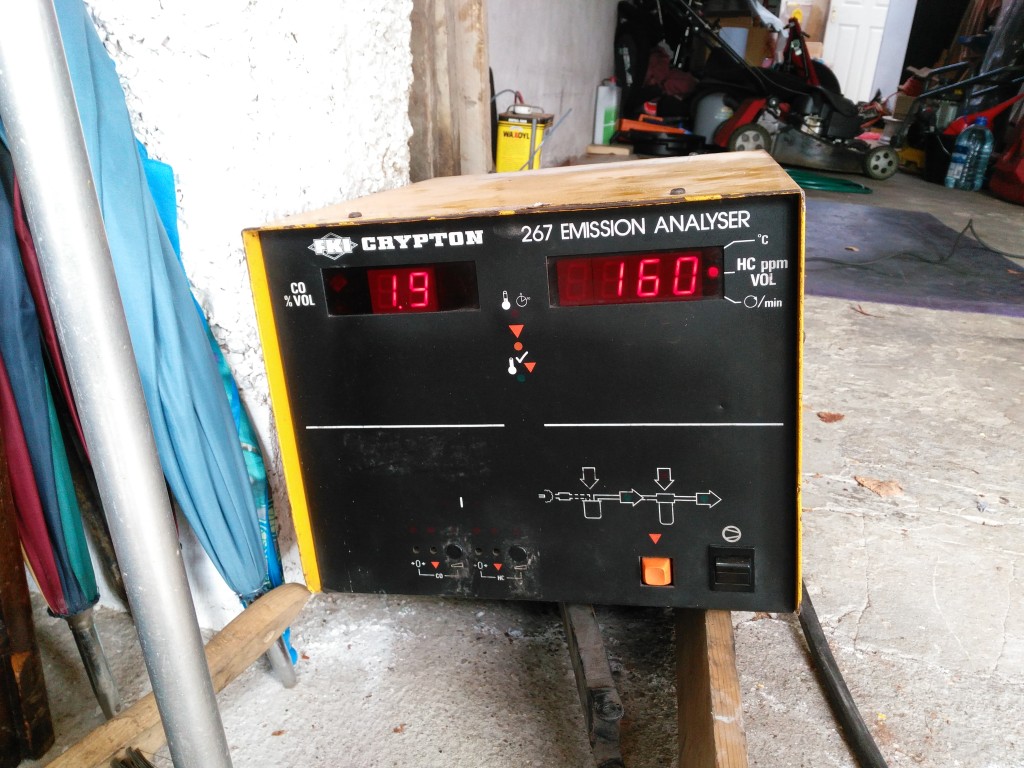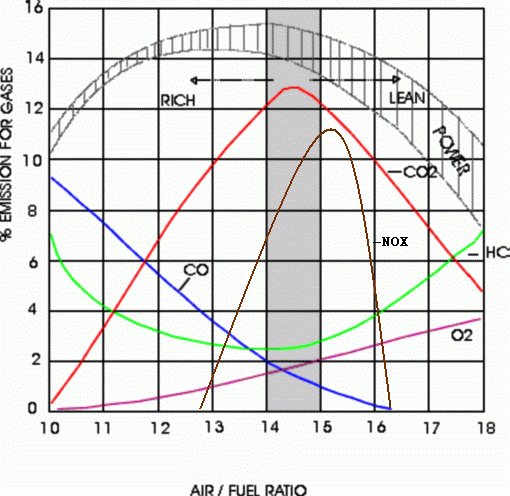Here’s a really useful plot I found when trawling for information to set up (or rather, understand) my Lotus Elan. My measurements were at idle and fast idle – what must be remembered is that a good setting at idle does not mean that mixture under load, or at speed will be right. These tests might indicate a fault though. Also consider that it is generally accepted that 90% of carburettor faults are ignition related or mechanical (e.g. timing, compression, etc) – the fuel system often gets the blame too early and it is important to rule out other concerns first.
I only have a two gas tester, so I can only measure Carbon Monoxide (CO) ad HydroCarbons (HC). From the plot above, for good running, the readings should be in the region below:
- CO: between about 1.5% and 3%
- HC: Realistically around 3%
- If I could measure Oxygen, then a value below 2% is OK.
Converting from percent to parts per million (for HC) is generally accepted as 1% of unburned fuel producing 200ppm of HC.
Trying to diagnose weak / rich running using the 2 gas analyser:
- Weak (lean running) is shown up by low CO (below 1%) and rising HC above around 3% (600ppm)
- Rich running is shown as a combination of high CO (above 3% and a lower HC figure). A rich, hunting misfire will probably start at 3-4% (600-800ppm) HC, and CO will already be well above 4%.
 My analyser is a little bit touchy (as to whether it will work at all) but when it does work, it’s pretty effective in understanding overall emissions. I’m not sure I believe it is very accurate on HC readings, but CO seems very plausible and matches pretty well with the readings on the calibrated machine at my local MOT garage (where this one came from!).
My analyser is a little bit touchy (as to whether it will work at all) but when it does work, it’s pretty effective in understanding overall emissions. I’m not sure I believe it is very accurate on HC readings, but CO seems very plausible and matches pretty well with the readings on the calibrated machine at my local MOT garage (where this one came from!).
This measurement was of my Lotus Elan M100 at idle. Going by the plot above, I would have expected the HC readings to have been around 2.6%, or indicated on the machine as 520ppm and the CO setting was chosen to be on the ‘safe’ side of the shaded ‘ideal’ zone of the plot.
At some point I should really buy a wideband lambda gauge so that I can see the Air-Fuel Ratio while the engine is under load (on the road). That really is the best way to determine mixture under load as the response period is significantly faster, meaning that diagnosis of carburettor or fuel injection mixture throughout the rev range, different load conditions and throttle opening rates can be carried out much more accurately. If anyone wants to send me one to evaluate, I’ll write it up and return it afterwards. 🙂
The plot above was found through Google Image search, the source website (with an excellent write up for 5-gas analysis) is here: http://www.crypton.co.za/Tto%20know/Emissions/exhaust%20emissions.html
![[Abs-Zero]](http://www.abs-zero.com/wordpress/wp-content/uploads/2013/11/abs-zero.jpg)
